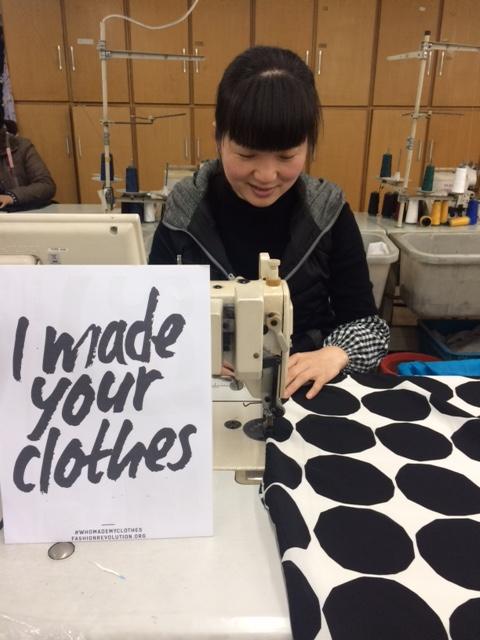Have you ever wondered who made your clothes? The annual Fashion Revolution campaign wants to shed light on the makers behind garments and promote a more sustainable fashion industry.
On 24 April 2013, the Rana Plaza building in Bangladesh collapsed. 1,138 people died and another 2,500 were injured, making it the fourth largest industrial disaster in history. The annual Fashion Revolution day that promotes a more sustainable fashion industry will take place on Tuesday 24 April 2018. Fashion Revolution is a not-for-profit campaign that strives to bring forth the makers of products and improve working conditions of the garment industry. The Fashion Revolution Campaign believes that the change for the better starts with a simple question: who made your clothes?
The sustainability of operations throughout our supply chain is very important to Marimekko and we want to do our part in promoting responsibility and transparency in the garment industry. About 70 % of Marimekko products are manufactured in Europe and the rest mainly in Asia. We want to pay special attention to the working conditions in our operations regardless of the manufacturing site or country.
We are proud of our skilled supplier network and all the employees that have their own stories to tell. In the spirit of Fashion Revolution we want to share some of them.
NEWTEX, China
NEWTEX is a clothing manufacturer near Shanghai established in 1997. The company specializes on knitwear manufacturing, especially on wool, cotton, viscose and cashmere products. NEWTEX finds the co-operation with Marimekko interesting and the relationship between the companies amicable and rewarding. 75% of NEWTEX’s employees are women and the average career length in the company is approximately 12 years. We met NEWTEX’s long-time seamstress, Fei Yuying, who has been working for the company for 10 years. For Fei, the best part of her work is manufacturing clothes, especially sweaters. In her spare time, Fei paints and spends time with her friends. When asking Fei what would be the thing she would change in her work, she replied: “I would like to learn pattern design at work.” Fei wanted to send greetings to Marimekko: “When I started making Marimekko sweaters a few years ago, I fell in love with your prints and colors. You can sense energy and enthusiasm in many of them, while some of the prints are more elegant. I hope the person who wears the shirt we produced will experience the same energy and joy as I do in my work! “
